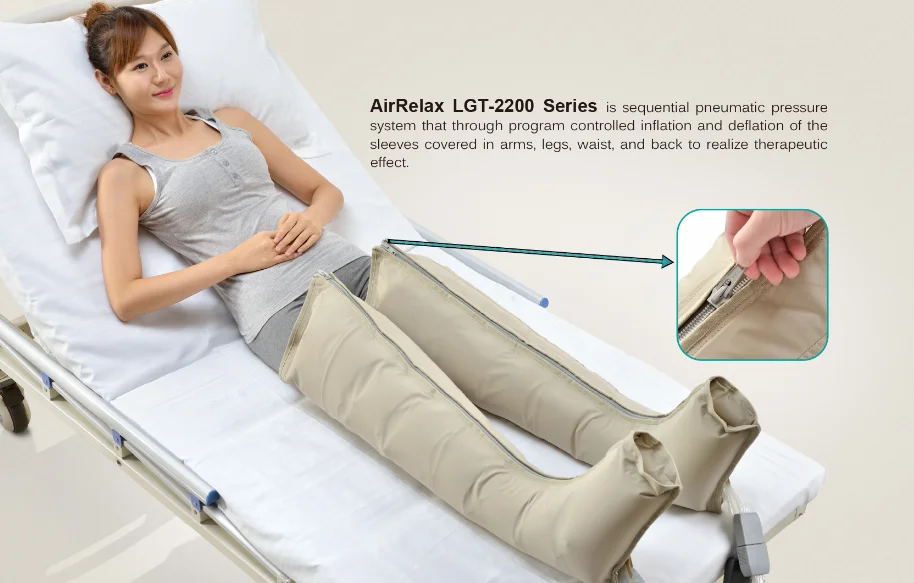

Who Develops Lymphedema After Breast Cancer Treatment?Ĭurrently, there’s no test or method of predicting who will develop lymphedema after being treated for breast cancer.
Pneumatic compression device for cancer patients skin#
The scarring of fibrosis is part of the body’s normal healing process but can cause permanent skin changes and can impede range of motion. Patients who have had radiation treatments may experience more severe fibrosis, especially in the chest wall areas. Fibrosis is present in all stages of lymphedema.

While swelling is one of the more noticeable effects of lymphedema, fibrotic changes occur that can progress to stiffness and hardening of the tissue. The swelling can appear in the arm, chest, shoulder, and back. Swelling, inflammation, pain, and restricted movement of the shoulder are all symptoms that commonly arise in women with post-breast cancer lymphedema. Not everyone who has breast cancer treatment will develop lymphedema, and scientists point to factors such as an inherited defect in the lymphatic system that may predispose a patient to developing lymphedema. Or, the treatment for breast cancer, such as surgery, removal of lymph nodes, radiation, or chemotherapy, can disrupt lymph pathways. Breast cancer can disrupt the lymph vessels. Lymphedema is the accumulation of lymph fluid due to a blockage or disruption of the lymphatic vessels, malformation of lymph vessels, or disease processes that cause the overproduction of lymph fluid. What is Lymphedema Following Breast Cancer? With proper treatment, BCRL is manageable, and new treatment options are huge strides forward for those with lymphedema. This article describes how lymphedema may result from breast cancer or its treatment and explores options for managing it.

Up to 10% of women face lymphedema after breast cancer treatment. Still, many encounter a frustrating lymphatic disorder that can occur from breast cancer treatment or from the cancer itself: breast cancer-related lymphedema (BCRL). People are surviving and thriving after breast cancer. Today, the 5-year survival rate for breast cancer is an astounding 90%, and the 10-year survival rate is also high at 84%.


 0 kommentar(er)
0 kommentar(er)
